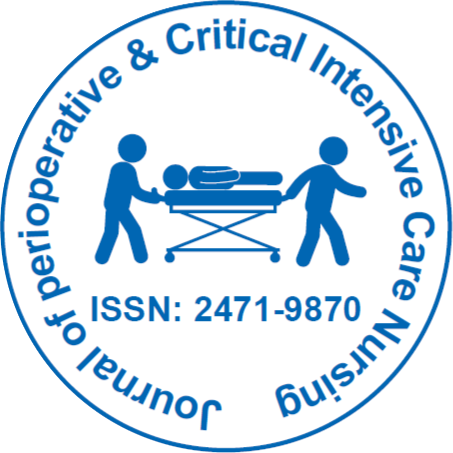
Journal of Perioperative & Critical Intensive Care Nursing
Open Access
ISSN: 2471-9870

ISSN: 2471-9870
Perspective - (2021)Volume 7, Issue 5
Diabetes is a chronic condition that is becoming more common around the world. The cost of this disease and its repercussions is consuming an increasing share of local and national budgets. Diabetes has detrimental psychosocial repercussions for individuals, lowering their quality of life. While research has improved diabetes treatment and control and boosted life expectancy, misalignments between research focus and what important to patients may result in research waste. Involving patients early in the research process is the first step toward reducing waste, since it helps to boost the relevance of themes studied in chronic diseases like diabetes. Chronic disease patients may have a high level of competence, which can lead to fresh insights about how to improve their symptoms and self-care. By giving a more complete understanding of health and the experience of a health condition, the patient perspective may complement that of the clinician and researcher.
The goal of this study was to look into the importance of diabetesrelated complication research subjects that are significant to people who have diabetes. First, in diabetes research, there has to be a better understanding of what is important to patients. The importance of avoiding and treating well-known diabetes complications such as kidney, eye, and nerve disorders was mentioned by both survey and focus group members. This conclusion demonstrates how important it is to conduct research on such problems for patients. Second, further research is needed into the bidirectional impact of "life context" on diabetes. Individual circumstances (e.g., life conditions, previous experiences), socio-economic position, and experience managing the disease are all aspects that need to be explored further, according to our participants, especially for the most under-represented people in this study. The third issue was the importance of expanding diabetes-related research. Our findings also recommend that study topics be modified to meet specific difficulties, such as immigrants' access to culturally relevant care.
Overall, our findings point to the need for more research on diabetes, its complications, and the bidirectional influence of a number of individual and contextual factors such as individual circumstances (e.g., life conditions, previous experiences, emotional distress); socio-economic status; and experience managing thecondition, particularly for the study's most under-represented groups. It was advised that study topics be targeted to specific concerns, such as ensuring immigrants have access to culturally appropriate treatment [1-3].
Diabetic Emergencies
Diabetic emergencies are a typical reason for people to visit the emergency room. Diabetic emergencies are divided into two categories: hyperglycemic and hypoglycemia. Diabetic ketoacidosis and hyperosmolar hyperglycemia are two hyperglycemic crises. These situations necessitate a thorough hydration plan to restore volume and promote perfusion, as well as IV insulin therapy and electrolyte monitoring. Identification of the underlying cause, oral meal and/or glucose, intravenous dextrose, and glucagon consideration are all part of the treatment for hypoglycemia. Diabetes has significant societal and individual expenses because of these financial and health consequences. Successful therapy of these patients in the emergency department (ED) lowers mortality and morbidity. The best data on the evaluation and management of diabetic situations is examined in this issue of Emergency Medicine Practice, and best-practice management guidelines are provided [1].
When the body's diabetic symptoms overwhelm it, it's called a diabetic emergency. Home treatment is unlikely to help at this point, and postponing medical treatment could result in irreversible injury or death. The person should go to the emergency room if there are indicators of an emergency. Some diabetic situations can be fatal if not treated quickly. Although it is not always feasible to prevent an emergency, being able to detect the warning signals can increase the odds of prompt treatment and a complete recovery. Diabetes is a serious and complicated disease, and it can cause an emergency for a variety of reasons. Managing diabetes through medicine and a healthy lifestyle, making sure people are aware of the illness and knowing as much as possible about diabetes and its complications can all help to lessen the likelihood of an emergency.
Citation: Schwartz RK (2021) Identifying Best Practices in Pain Assessment and Management for Intensive Care Unit Patients. J Perioper Crit Intensive Care Nurs 7: 186. doi:10.35248/2471-9870.21.7.186
Received: 04-Sep-2021 Accepted: 18-Sep-2021 Published: 25-Sep-2021 , DOI: 10.35248/2471-9870.21.7.186
Copyright: ©2021 Schwartz RK et al. This is an open access article distributed under the term of the Creative Commons Attribution License, which permits unrestricted use, distribution, and reproduction in any medium, provided the original work is properly cited.